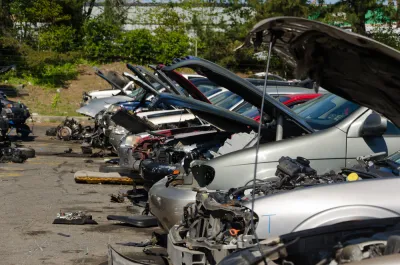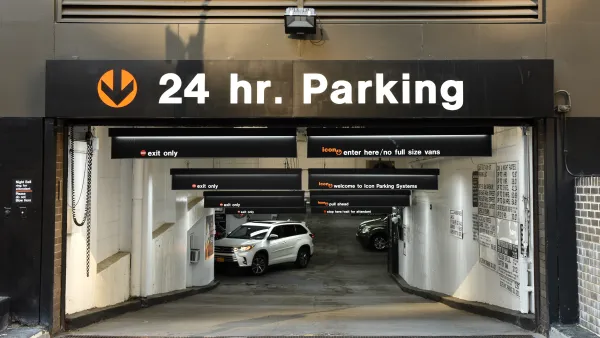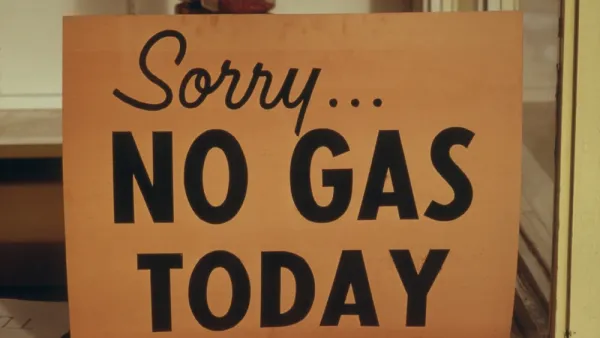A new paper makes a compelling case for three simple transportation policy changes that could significantly reducing emissions, congestion and accidents: distance-based vehicle insurance and sales taxes, and parking cash out.

Chicago StreetsBlog columnist new paper by transportation policy experts Allen Greenberg and John Evans, "Comparing Greenhouse Gas Reductions and Legal Implementation Possibilities for Pay-to-Save Transportation Price-shifting Strategies and EPA’s Clean Power Plan," makes a compelling case for reducing transportation emissions with three simple changes to driving incentives:
- Converting fixed pricing mechanisms for car insurance to pay-as-drive-and-you-save (PAYDAYS), which charge people a variable rate, based upon how many miles they drive;
- Requiring employers who provide free parking for their employees to implement parking cash-out programs, which provides an equivalent cash incentive to employees who do not drive alone to work; and
- Converting fixed-percentage sales taxes on new vehicle purchases to mileage-based taxes spread over a three-year period.
These changing could provide substantial benefits, achieving between 37 percent and 95 percent of the emissions reductions projected from the Obama administration’s Clean Power Plan, the authors estimate. These are win-win strategies: In addition to reducing pollution emissions they also provide substantial consumer savings, public health and safety benefits, and congestion reductions, plus road and parking facility cost savings. Because PAYDAYS insurance pricing gives higher-risk drivers an extra incentive to reduce their mileage, each 1% reduction in vehicle mileage should provide a greater than 1% reduction in crash casualties.
We know the Trump administration doesn’t care about global warming and is outright hostile to any attempts to address it. So Greenberg and Evans say states should pick up the slack. As air quality researcher Tim Kovach explains:
"They found that if each of the 19 states (plus the District of Columbia) that voted for Hillary Clinton in 2016 signed up for these three ideas, it would cut GHG emissions by 103 MMTCO2e (40% of total potential savings). Next, they estimated that if California, the nine East Coast states in the Regional Greenhouse Gas Initiative (RGGI), and the eight other states that signed up to defend the CPP in federal court all took action, they could achieve 35% of the emissions savings from the CPP."
Kovach concludes,
"As this paper makes clear, policymakers at all levels of government can put a real dent into transportation-related GHGs by implementing smart transportation demand management (TDM) policies. But beyond just tackling, you know, an existential planetary crisis, these types of TDM policies create co-benefits. Internalizing the real costs of driving and reducing VMT will reduce traffic crashes, potentially averting thousands of injuries and premature deaths, cut car insurance premiums, improve air quality, lessen the strain on infrastructure, increase sales of more fuel efficient/alternative fuel cars for automakers, curb economic inequality, and begin to shift us away from the myriad costs of our SOV-centric transportation system."
FULL STORY: 3 Policy Fixes That Could Dramatically Reduce Transportation Emissions

Analysis: Cybertruck Fatality Rate Far Exceeds That of Ford Pinto
The Tesla Cybertruck was recalled seven times last year.

National Parks Layoffs Will Cause Communities to Lose Billions
Thousands of essential park workers were laid off this week, just before the busy spring break season.

Retro-silient?: America’s First “Eco-burb,” The Woodlands Turns 50
A master-planned community north of Houston offers lessons on green infrastructure and resilient design, but falls short of its founder’s lofty affordability and walkability goals.

Test News Post 1
This is a summary

Analysis: Cybertruck Fatality Rate Far Exceeds That of Ford Pinto
The Tesla Cybertruck was recalled seven times last year.

Test News Headline 46
Test for the image on the front page.
Urban Design for Planners 1: Software Tools
This six-course series explores essential urban design concepts using open source software and equips planners with the tools they need to participate fully in the urban design process.
Planning for Universal Design
Learn the tools for implementing Universal Design in planning regulations.
EMC Planning Group, Inc.
Planetizen
Planetizen
Mpact (formerly Rail~Volution)
Great Falls Development Authority, Inc.
HUDs Office of Policy Development and Research
NYU Wagner Graduate School of Public Service




























